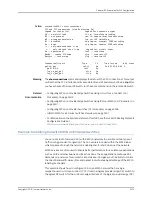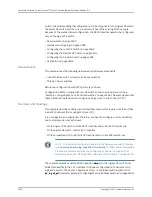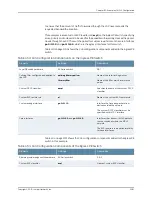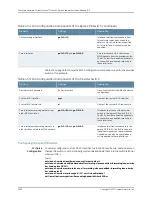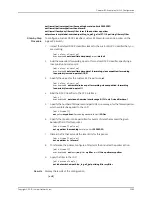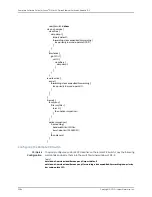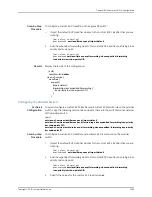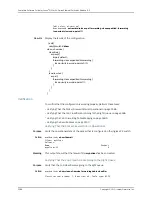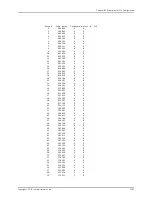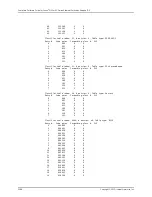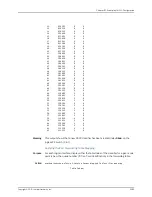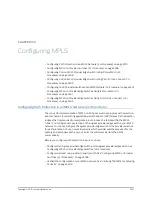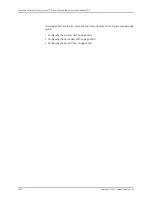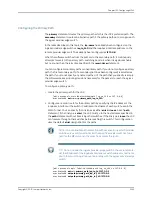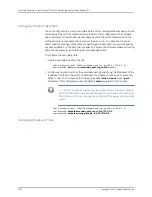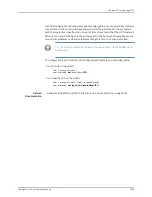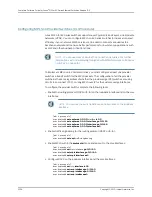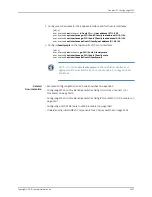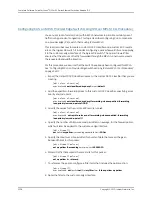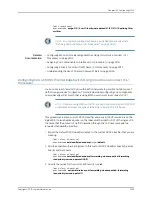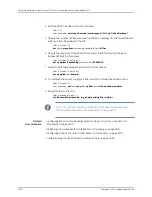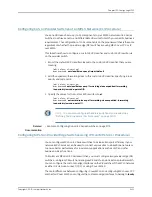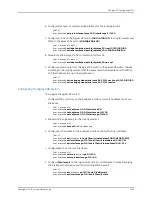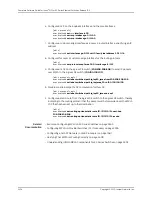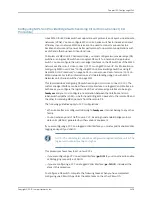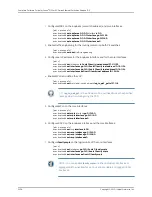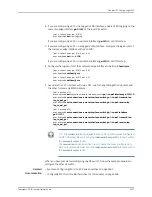
Configuring the Primary Path
The
primary
statement creates the primary path, which is the LSP’s preferred path. The
secondary
statement creates an alternative path if the primary path can no longer reach
the egress provider edge switch.
In the tasks described in this topic, the
lsp-name
has already been configured on the
ingress provider edge switch as
lsp_to_240
and the loopback interface address on the
remote provider edge switch has already been configured as
127.0.0.8
.
When the software switches from the primary to the secondary path, it continuously
attempts to revert to the primary path, switching back to it when it is again reachable
but no sooner than the retry time specified in the
revert-timer
statement.
You can configure zero primary paths or one primary path. If you do not configure a primary
path, the first secondary path (if a secondary path has been configured) is selected as
the path. If you do not specify any named paths, or if the path that you specify is empty,
the software makes all routing decisions necessary for the packets to reach the egress
provider edge switch.
To configure a primary path:
1.
Create the primary path for the LSP:
[edit protocols
mpls label-switched-path
lsp_to_240 to 127.0.0.8]
user@switch#
set
primary
primary_path_lsp_to_240
2.
Configure an explicit route for the primary path by specifying the IP address of the
loopback interface or the switch IP address or hostname of each switch used in the
MPLS tunnel. You can specify the link types as either
strict
or
loose
in each
path
statement. If the link type is
strict
, the LSP must go to the next address specified in
the
path
statement without traversing other switches. If the link type is
loose
, the LSP
can traverse through other switches before reaching this switch. This configuration
uses the default
strict
designation for the paths.
NOTE:
You can enable path protection without specifying which provider
switches are used. If you do not list the specific provider switches to be
used for the MPLS tunnel, the switch calculates the route.
TIP:
Do not include the ingress provider edge switch in these statements.
List the IP address of the loopback interface or switch address or hostname
of all other switch hops in sequence, ending with the egress provider edge
switch.
[edit protocols mpls label-switched-path lsp_to_240 to 127.0.0.8]
user@switch#
set
path
primary_path_lsp_to_240 127.0.0.2
user@switch#
set path primary_path_lsp_to_240 127.0.0.3
user@switch#
set path primary_path_lsp_to_240 127.0.0.8
3393
Copyright © 2010, Juniper Networks, Inc.
Chapter 123: Configuring MPLS
Summary of Contents for JUNOS OS 10.3 - SOFTWARE
Page 325: ...CHAPTER 17 Operational Mode Commands for System Setup 229 Copyright 2010 Juniper Networks Inc ...
Page 1323: ...CHAPTER 56 Operational Mode Commands for Interfaces 1227 Copyright 2010 Juniper Networks Inc ...
Page 2841: ...CHAPTER 86 Operational Commands for 802 1X 2745 Copyright 2010 Juniper Networks Inc ...
Page 3367: ...CHAPTER 113 Operational Mode Commands for CoS 3271 Copyright 2010 Juniper Networks Inc ...
Page 3435: ...CHAPTER 120 Operational Mode Commands for PoE 3339 Copyright 2010 Juniper Networks Inc ...
Page 3529: ...CHAPTER 126 Operational Mode Commands for MPLS 3433 Copyright 2010 Juniper Networks Inc ...

